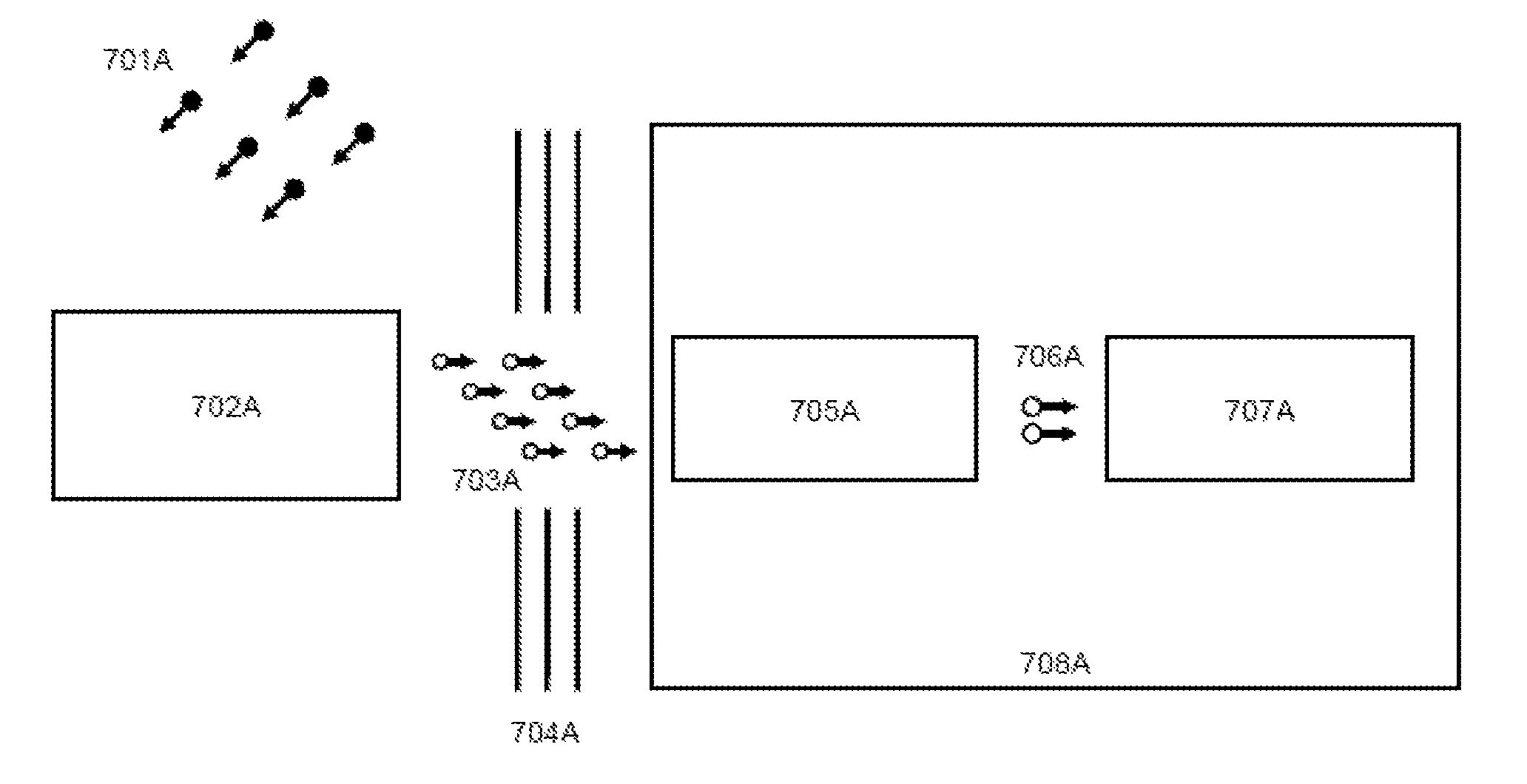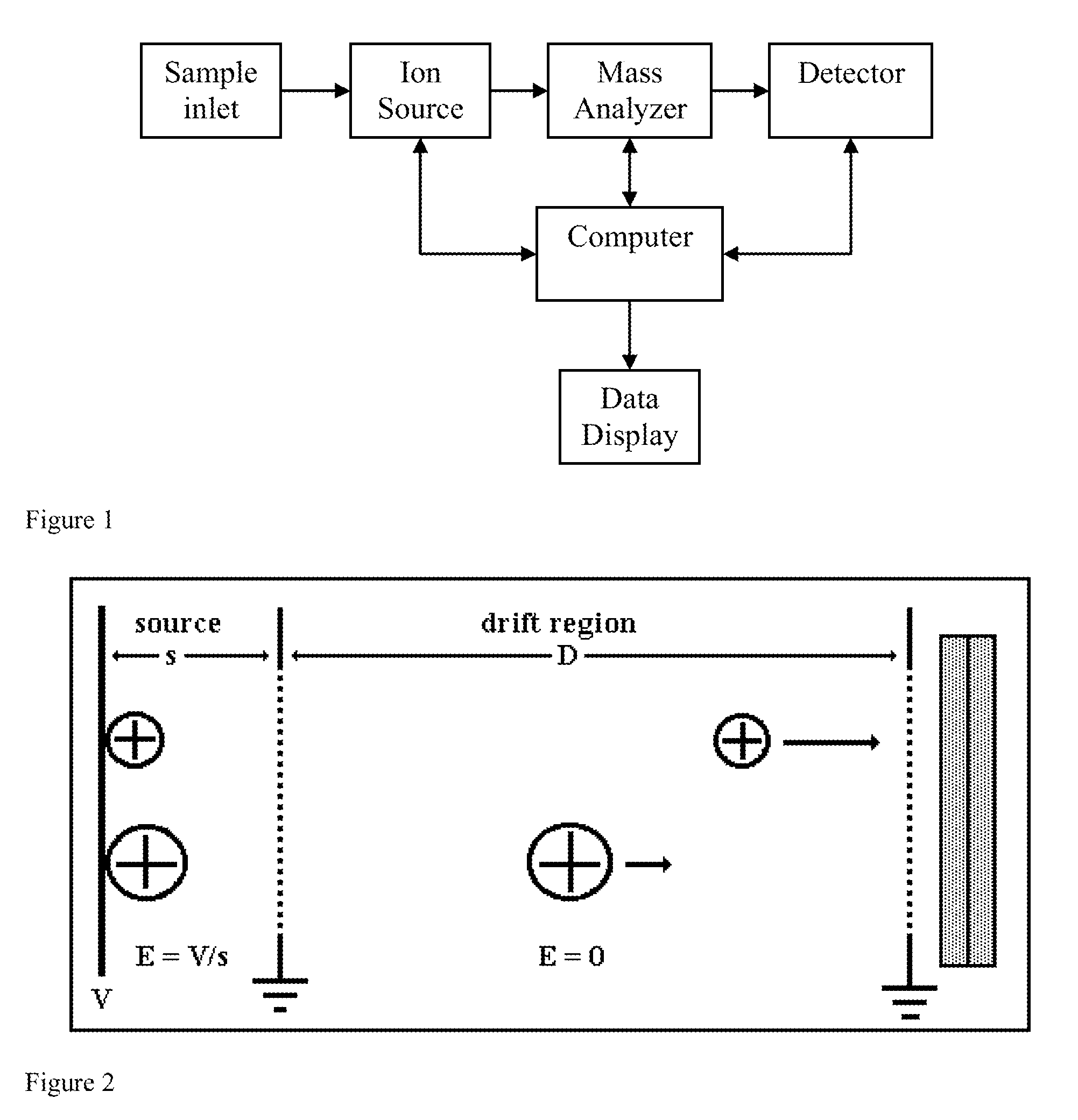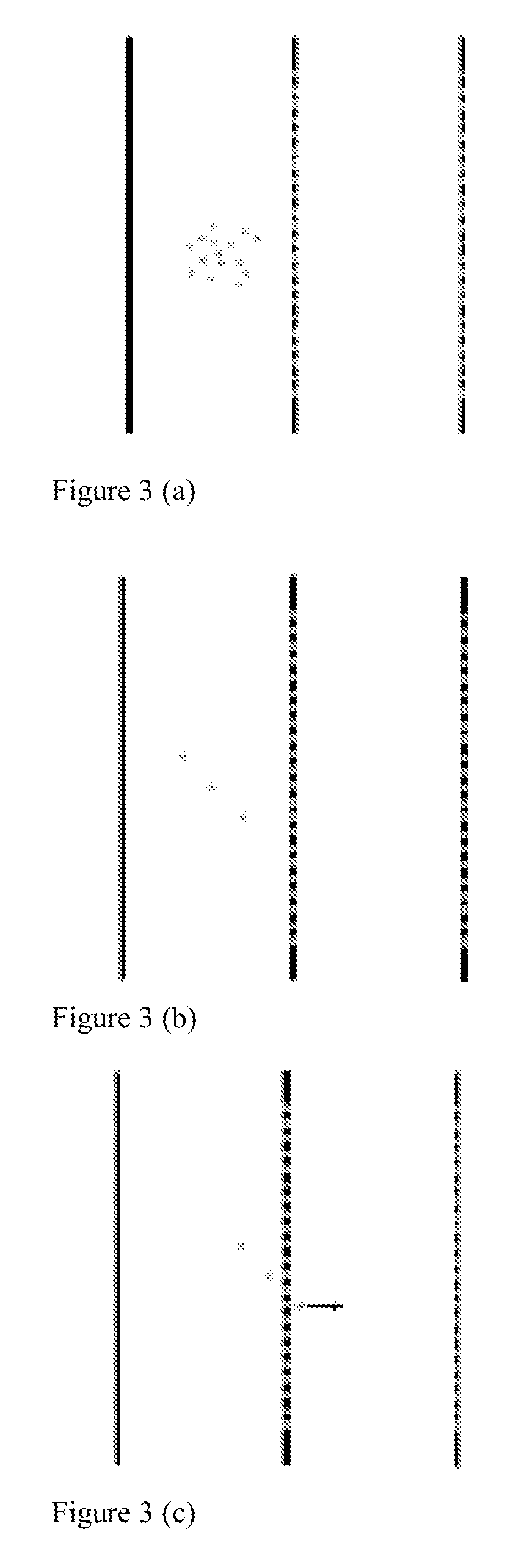Mass spectrometer system
a mass spectrometer and mass spectrometer technology, applied in mass spectrometers, lasers, particle separator tubes, etc., can solve the problems of large impact energy loss, unmatched sensitivity, selectivity and flexibility, and liquid debris is likely to freeze into solid micro-droplets. , to achieve the effect of high duty cycl
- Summary
- Abstract
- Description
- Claims
- Application Information
AI Technical Summary
Problems solved by technology
Method used
Image
Examples
Embodiment Construction
[0051]The present inventors have realised that in sampling particles of varying size in a dense cloud of debris in the vacuum of space where, for example, particles to be sampled will be travelling at high velocity, an on-line analysis of the particle composition is required as opposed to sample collection and return to earth for laboratory analysis. A detection system comprising a kinetic impact ionization source (KIIS) coupled to a quadrupole mass spectrometer arrangement provides distinct and specific advantages.
[0052]As was described above a KIIS produces ions by employing the kinetic energy of the particle to vaporize and ionize it during impact with a target plate. Once the ions have been produced and extracted from the source, a mass analyzer is required to separate the ions according to their mass to charge ratio and transport them to the detector. The correct choice of mass analyzer has been found to be critical to obtaining usable data from the instrument. In fact, the cho...
PUM
 Login to view more
Login to view more Abstract
Description
Claims
Application Information
 Login to view more
Login to view more - R&D Engineer
- R&D Manager
- IP Professional
- Industry Leading Data Capabilities
- Powerful AI technology
- Patent DNA Extraction
Browse by: Latest US Patents, China's latest patents, Technical Efficacy Thesaurus, Application Domain, Technology Topic.
© 2024 PatSnap. All rights reserved.Legal|Privacy policy|Modern Slavery Act Transparency Statement|Sitemap



